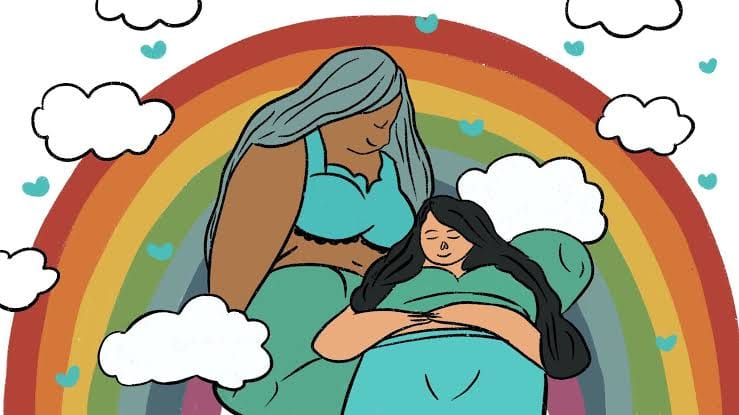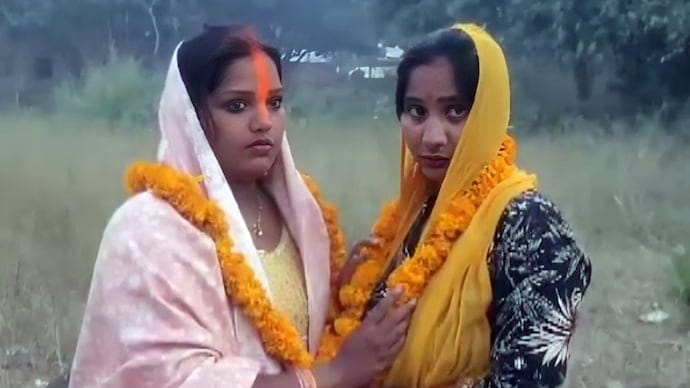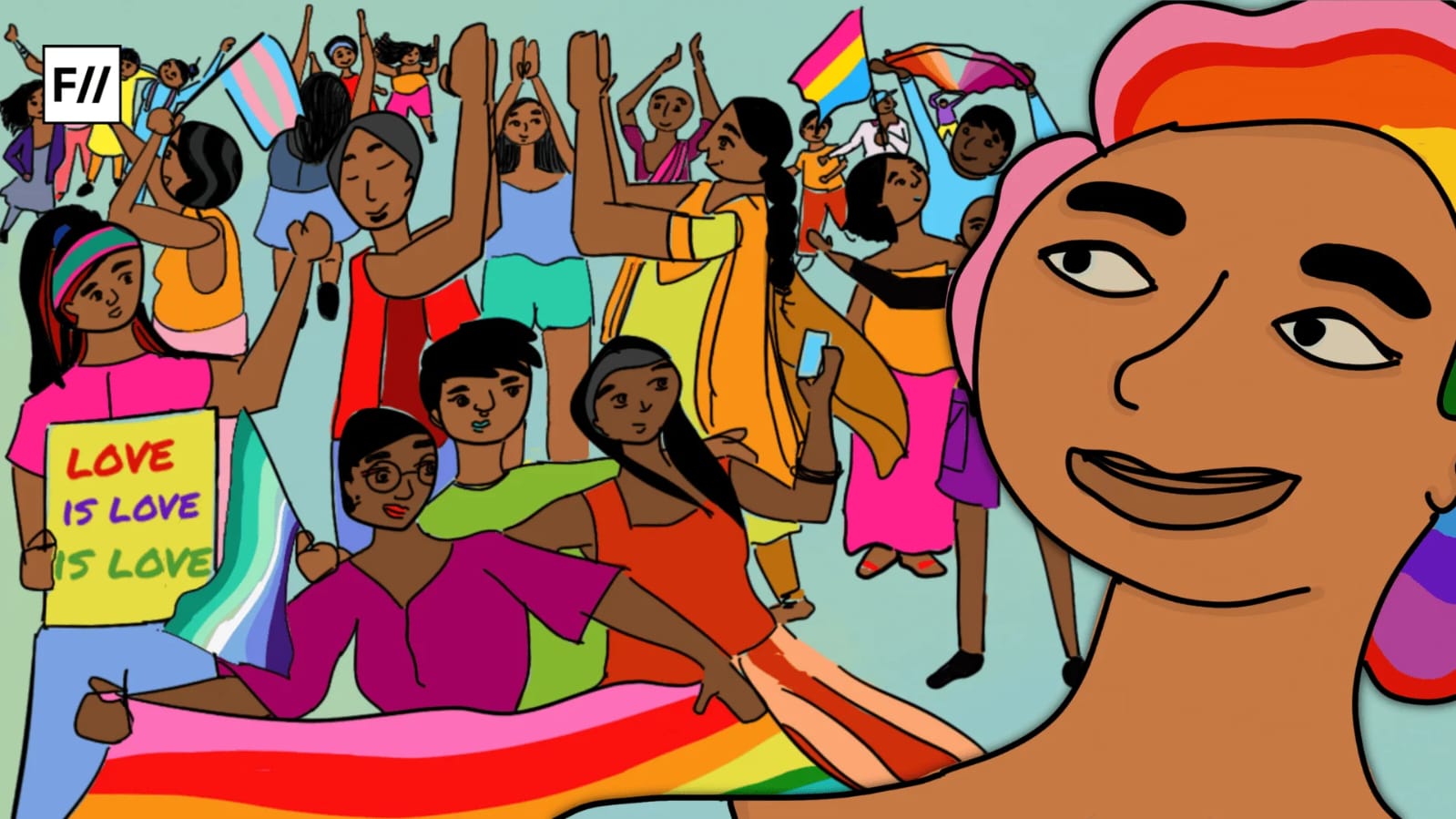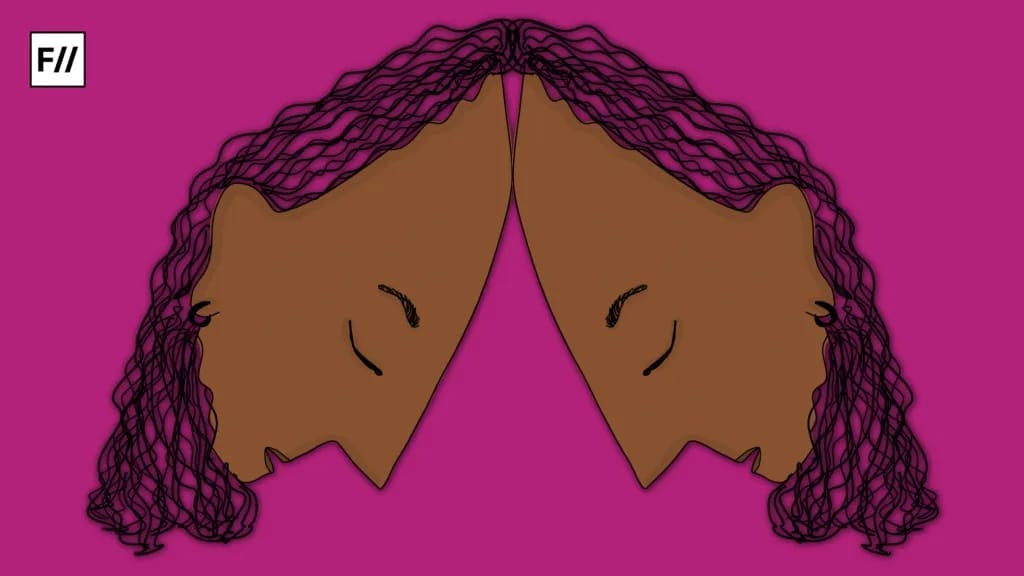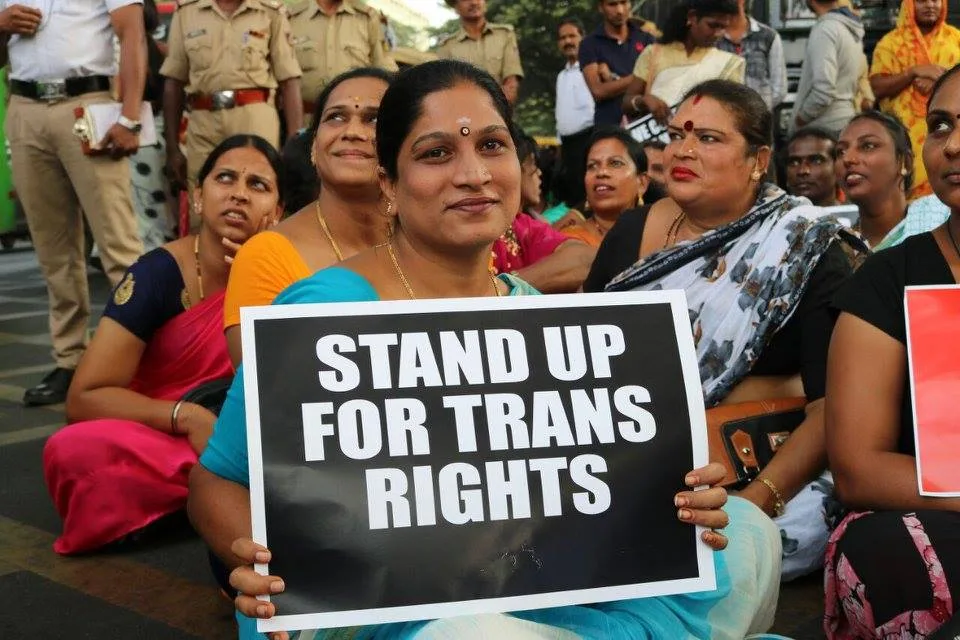It took the internet by a frenzy when two women, reportedly married each other in a temple in Uttar Pradesh, leaving their abusive-alcoholic husbands. While domestic violence is illegal under Section 84 of the Bharatiya Nyaya Sanhita, the two women, instead of moving to the court, garlanded each other in a private wedding ceremony, finding comfort in each others’ arms. While it may seem insignificant to anyone seeing it through the lens of same-sex marriage only, the underlying subjectivities in this lesbian marriage are to be unwrapped.
It took the internet by a frenzy when two women, reportedly married each other in a temple in Uttar Pradesh, leaving their abusive-alcoholic husbands.
Runaway couples have often done so to escape the societal vigilantism or being killed for honour. The pervasive nature of honour killing results in hundreds of deaths, each year, socially criminalising love, although legally accepted. This particular case deserves more attention since, the case for marriage equality has been dismissed recently by the hon’ble Supreme Court of India, denouncing same-sex marriage to be an urban-elitist concept, as propounded by the Centre.
Ashwini Suthankar’s (ed.), Facing The Mirror: Lesbian Writing From India, holds a candle to such instances where women have found themselves in abusive heterosexual relationships but have re-discovered their peace with a woman. The link of commonality between the instances are marriage, temple, and also encompassing the notion of political lesbianism.
Lesbian marriages: desire or politics?
A short-narrative titled, “Promise of Forever” in Suthankar’s book written under the pseudonym of Scriblerus, speaks about the plan that two women had devised to get married at the Arya Samaj Mandir, and perform the ritualistic ‘kanyadaan‘, where the narrator willing to give herself away to another woman. With no more interfering men (and women), the narrator wanted to surrender herself to another woman. While the story meets an abrupt end making us long for a happy ending, lesbian couples are often bereft of the ending that should’ve been happy.
The narrator seems to be wary of the ‘red flag, every month‘ while dating men and thus chooses to wrap herself in the arms of the one she loved. The women in Gorakhpur, as reported by news outlets, have taken a bold move against domestic violence by marrying each other. The narrator in the book and the two women from Gorakhpur, have initiated a political avoidance of men from their domestic lives. While this political act of engaging in a homosexual relationship is evident from their narrative, the news reports have failed to visualise the desire that the two women have for each other.
While this political act of engaging in a homosexual relationship is evident from their narrative, the news reports have failed to visualise the desire that the two women have for each other.
Even when women are marrying themselves, their abusive husbands have become the focal point of the news report, eliminating any form of desire from the lives of these two women. It is not unusual for women’s desire to be made invisible, especially if it is in the context of other women or lesbian relationships. Michel Foucault’s book-series on The History of Sexuality brought out the historical invisibilisation of women’s desire, where women are mostly visualised in the context of procreation and furthering the progeny.
Masculinity or maleness?
Reports have mentioned how one of the two women have taken the role of a “groom” and applied sindoor on the other woman’s forehead. While the picture being circulated on social media and news websites have typified the two women in a butch-femme aesthetic on the basis of their attire, the woman donning a shirt was relegated to the role played by a man in a heterosexual marriage.
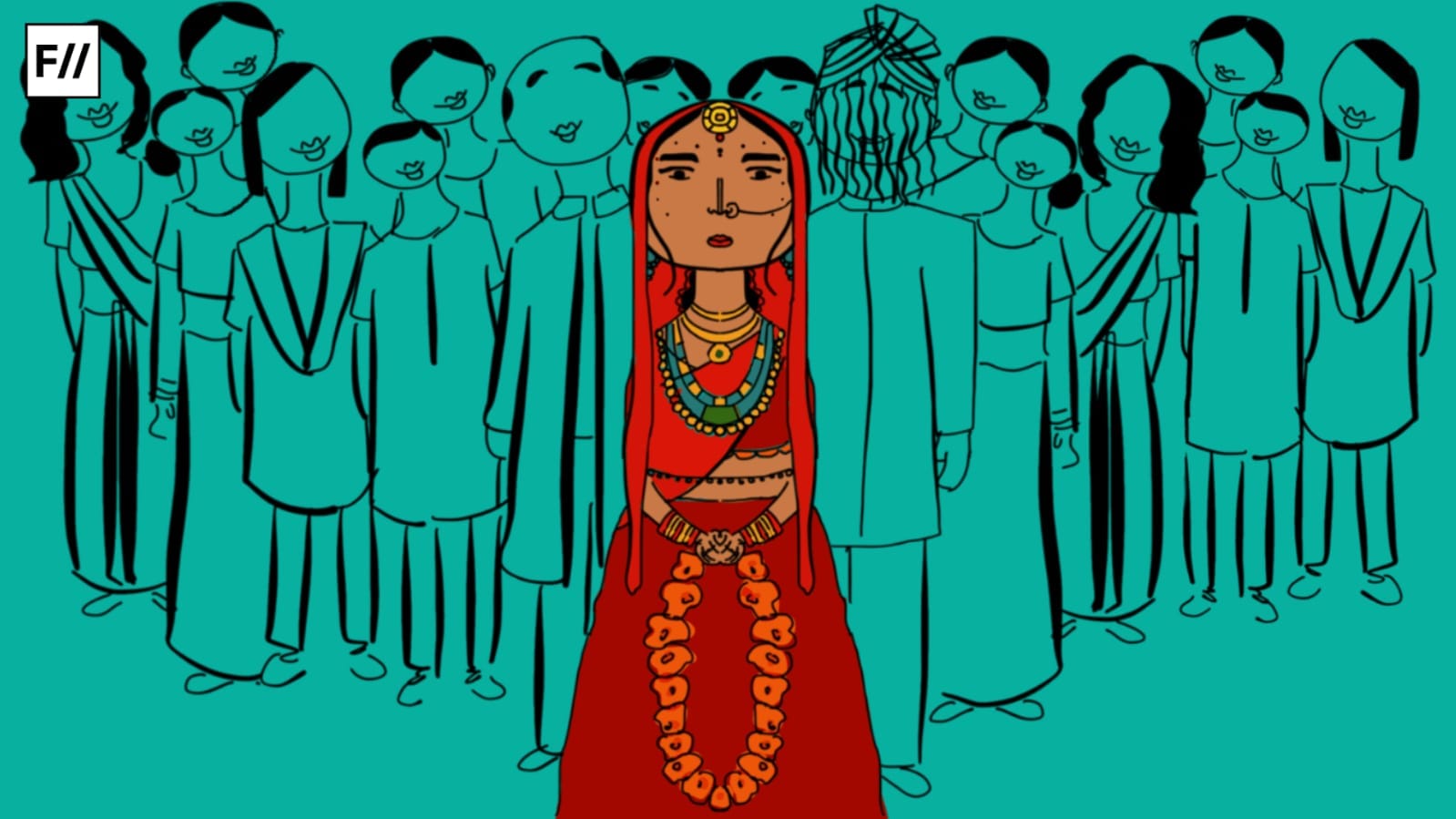
No allusions were made to female masculinity; rather reducing the woman to the role of a “groom” seemed easier. The homosexual marriage between two women is performed to ensure the absence of a groom but the essentialists seem apprehensive of seeing two women in a loving relationship without ascribing “maleness” to either one of them. The reluctance to view the two women as each others’ wives, makes the threat of female deviance to the patriarchal order, all the more palpable.
It is pertinent to mention the numerous lesbian suicides that have taken place over the years. Unable to place themselves among the many victimisations of the society, lesbian couples have taken their lives, only to be together for the rest of their lives. The reality of the lesbian suicide pacts seem to cause no outrage since it consists of a miniscule population and is not an issue of national interest.
From being invisibilised by the larger women’s movements to being recognised as women playing the role of a man, the invisibilisation is also a form of victimisation that alienates lesbian women from the larger alliance.
From being invisibilised by the larger women’s movements to being recognised as women playing the role of a man, the invisibilisation is also a form of victimisation that alienates lesbian women from the larger alliance. Women’s camaraderie amongst each other have reduced their desire for each other as mere “friendship” or being each other’s ‘sakhi’, which renders their erotic feelings, unnoticed.
Rituals in lesbian marriages
One might question the causal commonality of Hindu rituals that have been performed at lesbian weddings. Ruth Vanita, a literary scholar, in her book Love’s Rite, mentions the importance of ‘saptapadi’ or seven steps that couples take to tie themselves into togetherness, forever. The Vedic verses that are uttered during the seven pheras, consider marriage as an end in itself, without speaking of procreation.
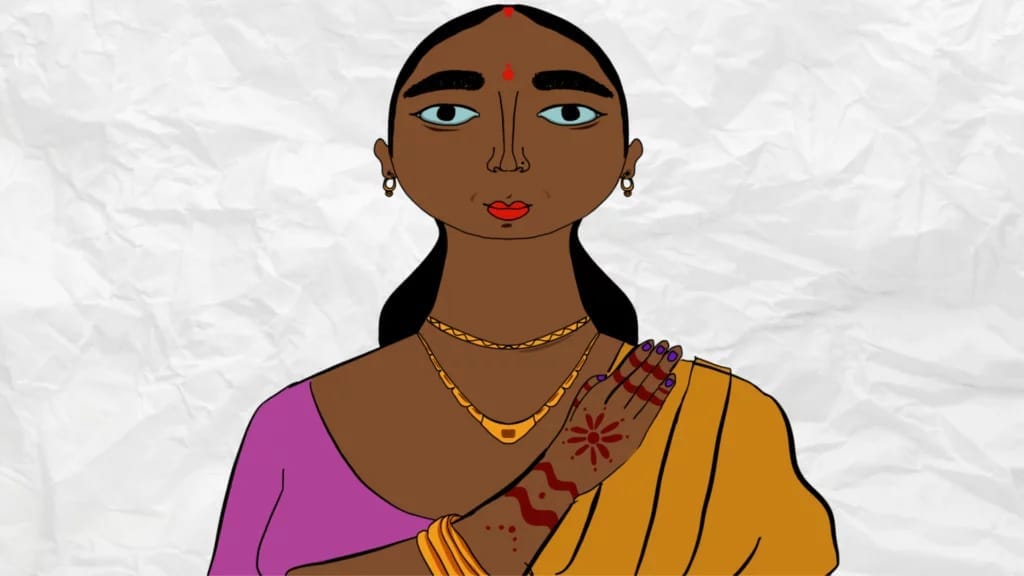
This makes the ritual relevant for weddings that do not seek to create a progeny. On the other hand, the act of garlanding each other is synonymous to north Indian, Hindu, Gandharva weddings, where the act signals the bride’s consent to marrying the groom, as Vanita noted. Thus, it is not unnatural for the women in Gorakhpur to partake in wedding religiosities given the very nature of their married, heterosexual counterparts.
The coupled women, subjected to the various forces of victimisation, have sought their peace in a marriage, which, by its nature, is a patriarchal institution but it is the nature of their relationship that makes their marriage an act of resistance, not only against their husbands but also in the face of heterosexuality, that seems to pit women against each other, to create a lacuna in their communitarian set-up, preventing any form of solidarity.
One needs to understand the rural queer with a different lens since more cohesive structures are abound and accountability increases. The privacy and anonymity accorded to the urban population, might not be a choice for the rural queer. We can only hope for the best for the two women who have wished to start anew their lives, in Deoria, in Uttar Pradesh without any undue interference.
